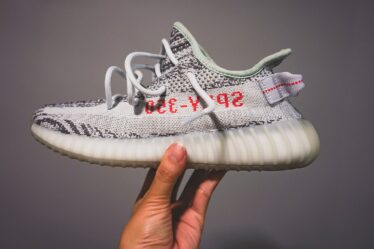
When Allbirds launched in 2015, it was a company on a mission to reduce the heavy carbon footprint of the footwear industry.
Instead of plastic or leather, Allbirds made its sneakers from Merino wool. It replaced synthetic foam used to give most sneaker midsoles a cushiony feel with a material made mostly from sugarcane. And it sold millions of dollars worth of shoes.
Fast-forward to 2022 and the company is just one of many looking to move the needle in the space, as mounting consumer and regulatory pressure push brands to improve their environmental footprint.
Shoes are typically made from hard-wearing, high-impact materials like leather or plastic-based synthetics and manufactured far from the final point of sale, limiting companies’ ability to monitor labour conditions. On top of that, shoes are also made of dozens — sometimes hundreds — of small constituent parts. That creates a complex puzzle for any design team to address every component, made more so by the fact that shoes are, by design, difficult to break apart, and therefore reuse or recycle.
“Apparel is much easier because you have just one material, maybe just a couple of stitches and then the product is done,” said Viviane Gut, senior director of sustainability at Adidas. “Footwear has up to 200 different parts that go into one shoe.”
To solve the challenge, companies are having to fundamentally rethink the way shoes are designed, manufactured and finally disposed of.
A Material Matter
For the last three years, Allbirds has been working to develop a new, even lower-impact material for its cushiony midsoles. Last week, the company launched a running shoe using the updated material, which is derived from castor bean oil. The new shoe requires less energy to make and produces less waste, Allbirds said.
Apparel is much easier because you have just one material, maybe just a couple of stitches and then the product is done. Footwear has up to 200 different parts that go into one shoe.
The biggest challenge was inventing a one-step process for turning the castor bean oil into a foam, said Jad Finck, Allbirds vice president of innovation and sustainability. Typically, manufacturing cushioned running shoes requires multiple energy-intensive steps and cutting away at blocks of foam to create the desired shape, producing waste in the process. Allbirds’ SwiftFoam, by contrast, uses a process that melts and injects liquid resin into a mould, where it then solidifies. “We would have been able to launch this shoe probably significantly earlier had we gone with the status quo,” Finck said.
Efforts to develop alternative materials with a lower environmental impact than leather, cotton canvas and plastic synthetics typically used in shoes is gaining ground elsewhere, too.
Companies like Adidas, Reformation and Golden Goose are experimenting with plant-based leather alternatives derived from mushrooms, cereal grains and palm leaves. Last year, investors poured more than $980 million into start-ups that make innovative animal-free materials, up from $425 million in 2020, according to the non-profit Material Innovation Initiative.
But many of these alternative materials have yet to reach commercial scale or competitive price points with their conventional incumbents. There’s also no environmental silver bullet and plant-based materials typically still need to contain plastics to ensure durability and performance.
For Allbirds, SwiftFoam marks just one more step towards its ambition to cut the carbon footprint of its products in half by 2025. Now it must continue to make the material better.
“The first challenge was, ‘how do we get this process to be lower-waste? How do we get this process [to be] lower-energy?’” said Finck. Increasing the plant-based content of the material represents the next challenge.
Supply Chain
New innovations are only one piece of the puzzle; the growing focus on sustainability is also pushing companies to rethink how and where they make their products.
For instance, Reformation’s first foray into footwear in 2019 was short-lived. The company, which pitches itself as the sustainable answer to fast-fashion giant Zara, had rushed into the category in response to consumer demand and didn’t feel comfortable that its supply chain could stand up to scrutiny. It pulled the brakes.
“We … started to reinvent the footwear supply chain starting from scratch, and really centring it in ‘how do we make the most sustainable dress shoes in the market?’” said Alison Melville, general manager of product innovation at Reformation. “That’s got to start from the very beginning of the supply chain.”
For Reformation, that meant producing everything in one place. The brand settled on the southern region of Brazil to make its dressy block heels and sandals, thanks to its concentration of leather tanneries rated highly for their environmental, ethical and farm-level traceability credentials, said Melville. The company doesn’t source cow hides from the Amazon region to avoid links to deforestation, instead using farms in the Pampas grasslands region. The localised supply chain also reduces fuel costs and emissions associated with shipping materials from one stage of production to the next.
[When you use] materials seven, eight, or 10 times over, then the [carbon] footprint goes down dramatically.
But reworking fashion’s traditional supply chains comes with its own challenges. French footwear brand Veja has built its business around close links to its Brazil-based suppliers and a commitment to ethical sourcing. Its production costs are also five to seven times what they would be in major shoe production hubs like Vietnam or China, said Veja co-founder Sébastien Kopp.
Kopp says he balances this, as well as the risks of inflation or disruption, with more caution in other business decisions. “We are developing step-by-step. We are not going too fast,” he said.
End of Life
Then there’s the question of making a shoe that can be easily recycled at the end of its life.
It’s a challenge that requires completely reimagining the way a shoe is constructed to simplify the number of individual components and rethink hard-to-recycle elements like glue. There are pockets of innovation: Adidas has developed a shoe made from one single material. Nike’s recent drop, the ISPA Link, is completely glueless and therefore easier to disassemble for repair or recycling purposes.
But creating shoes for recyclability is just one piece of the puzzle. Companies also need to think about how to get old shoes from consumers to recyclers and then (ideally) take the resulting raw material to make new products.
“We need the commitment and the participation of the consumer to actually bring the product back or send it back to us,” said Adidas’ Gut. That needs to be accompanied by a shift in the industry more broadly, she added. After all, the sneakerhead craze does not exactly encourage shoppers to give up their possessions.
Some players are innovating both their products and business model with this in mind. For example, On’s soon-to-launch subscription service, Cyclon, gives customers access to the brand’s latest sneakers in exchange for their old On shoes, which the company then recycles. The company is aiming to reduce its carbon emissions by 55 percent per pair of shoes by 2030.
“[When you use] materials seven, eight, or 10 times over, then the [carbon] footprint goes down dramatically,” said On’s co-founder Caspar Coppetti. “You have to really go to the source and develop new processes, new technologies, scale them … and then there’s a lot more investment needed.”



